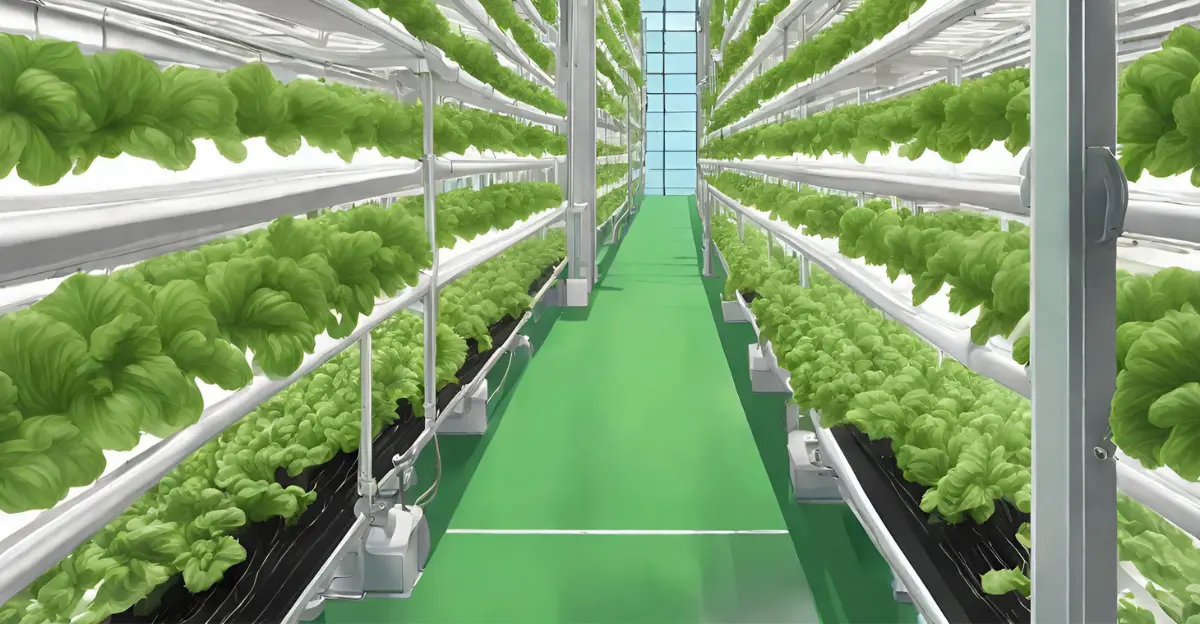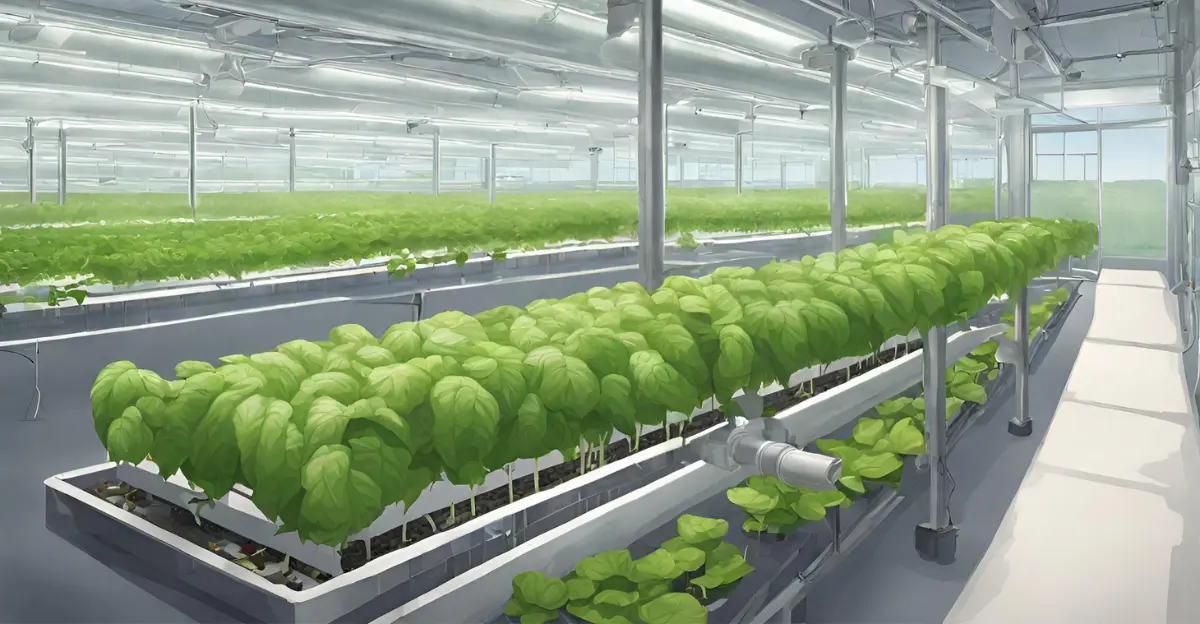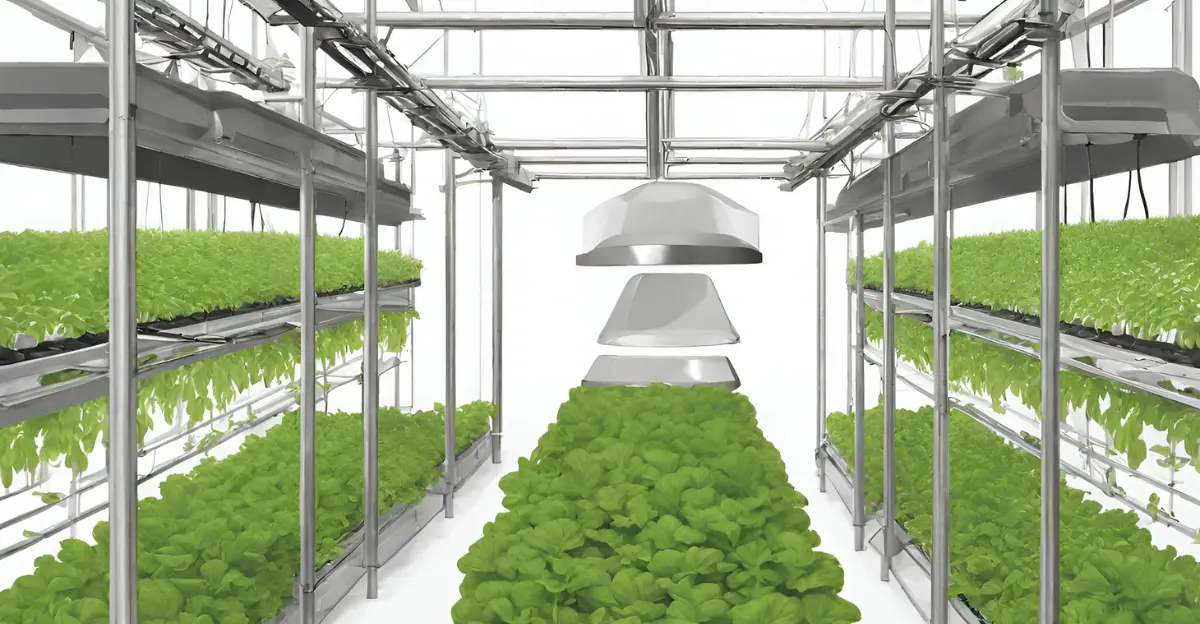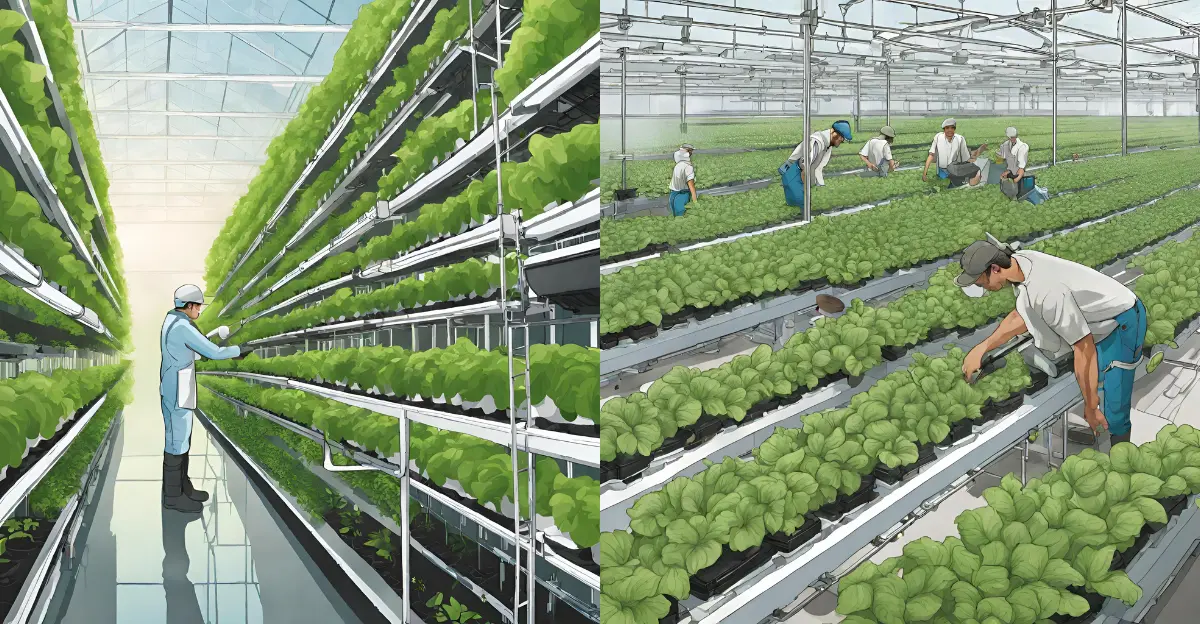Vertical vs Horizontal Hydroponics: The Surprising Winner

Let’s be real—you’re probably reading this because you want to grow some kick-ass plants in your tiny apartment, but have no freaking idea whether vertical hydroponics is the way to go or if a boring horizontal system is better.
Fear not, my friend—we’re diving into this head-on.
Vertical hydroponics involves growing plants in stacked tower-like structures, while horizontal hydroponic systems lay plants out flat.
Both are soil-free growing methods, but they can differ a lot in terms of cost, space efficiency, resource usage, and more.
Over the next few sections, we’ll ruthlessly compare vertical vs. horizontal hydroponics on factors like setup costs, water and nutrient needs, potential yields, maintenance headaches, and suitability for different plant types.
Let’s roll the carpets!
Quick Key Takeaways
What is Vertical Hydroponics?

Vertical hydroponics is all about growing plants vertically in stacked towers or layers, instead of spreading them out horizontally like conventional farming methods.
These systems are completely soilless—plants get their nutrients from a liquid solution.
Here’s how it works: the plants’ roots are suspended in an inert growing medium like perlite or rock wool.
A nutrient-rich water solution is continuously pumped from a reservoir and circulated through the system, feeding the thirsty roots directly.
Common vertical hydroponic setups include the Nutrient Film Technique (NFT) where plants sit in sloped channels with a thin film of nutrient solution flowing over the roots, or aeroponics where the roots hang freely in the air and get periodically misted with nutrients.
The main advantages of going vertical include:
Space Efficiency: You can grow way more plants per square foot by stacking vertically compared to horizontal growing beds. Perfect for small urban spaces.
Water Conservation: These systems use 70-90% less water than soil farming since the water gets recycled again and again.
Controlled Environment: Vertical hydroponic farms are indoors with precise control over lighting, temperature, humidity, and other conditions for optimal plant growth year-round.
But vertical hydroponics isn’t all sunshine and rainbows.
Some downsides include high initial costs to set up the equipment, high energy usage for things like lighting and climate control, and a steep learning curve since these systems require special expertise.
Overall though, vertical hydroponics offers a space-saving, resource-efficient solution for producing fresh greens locally.
What is Horizontal Hydroponics?

As the name suggests, horizontal hydroponics involves growing plants parallel to the ground plane. This is in contrast to vertical hydroponic systems where plants are stacked vertically to maximize space use.
The most common types of horizontal hydroponic setups include:
1. Nutrient Film Technique (NFT): Plants are placed in channels or pipes with a constant, shallow stream of nutrient-rich water flowing underneath the roots. This recirculating water film provides plants with moisture, nutrients, and oxygen.
2. Deep Water Culture (DWC): The plants are suspended above a deeper reservoir filled with aerated nutrient solution. The roots grow directly into the oxygenated water to absorb what they need.
3. Ebb and Flow (Flood and Drain): Grow beds or trays are filled with an inert growing medium like perlite or hydroton. These trays are periodically flooded with nutrient water pumped from a reservoir, which then slowly drains back down after the medium is saturated.
One of the biggest advantages of horizontal hydroponics is the simplicity and lower costs.
Setting up a basic horizontal NFT or ebb and flow system is generally easier for beginners compared to constructing complex vertical racks or towers.
Horizontal systems also allow more exposure to all parts of the plant.
The drawbacks?
Horizontal hydroponic setups tend to be less space-efficient than vertical systems, requiring a larger floor footprint to produce the same yields.
Horizontal systems also rely more on gravity for draining and recirculating nutrient solutions, while vertical setups can use pumps.
For new hobbyists just wading into hydroponics, a straightforward horizontal system, especially techniques like deep water culture (DWC), could be the ideal starting point before exploring advanced vertical setups.
Factors to Consider
1. Available space

You’d think, with all the fancy tech involved in hydroponics, these systems would need massive grow rooms or greenhouses. But nope, vertical hydroponic setups are masters at making the most of compact spaces.
With vertical hydroponics, you can seriously maximize the heck out of limited growing areas.
By stacking plants vertically in columns or shelved towers, it’s possible to produce way more crops per square foot compared to horizontal setups that waste all that sweet, sweet airspace.
In a 2016 lettuce study, a vertical farm was able to produce an impressive 2.86 kg of greens per production section, versus a mere 0.25 kg for horizontal methods.
That’s over 10X higher yields in the same footprint!
Heck, NASA explored using vertical aeroponics inside habitats for future Mars missions—now that’s some next-level compact gardening!
Compared to spreading crops across a horizontal single-level plane, the compact vertical stacks basically let you defy gravity to cram in way more plants upwards instead of just outwards.
This protects seedlings lower down while still allowing mature plants to bask in all the good lighting up top.
SIDENOTE: Mature plants at the top may block light from reaching lower levels if not carefully managed. Supplemental lighting is often used to address this issue.
Not to say horizontal hydro is totally useless. If you’ve got acres of greenhouse space, then spreading crops horizontally could work just fine.
2. Crops
| Crop Type | Vertical Hydroponics | Horizontal Hydroponics |
|---|---|---|
| Leafy Greens | Lettuce, Kale, Spinach, Arugula, Chard, Collard Greens. | Lettuce, Kale, Spinach, Arugula, Chard. |
| Herbs | Basil, Mint, Cilantro, Parsley, Oregano, Chives. | Basil, Mint, Cilantro, Parsley. |
| Small Fruiting | Strawberries, Cherry Tomatoes, Small Peppers. | Strawberries, Tomatoes, Peppers. |
| Large Fruiting | Not ideal. | Tomatoes, Peppers, Eggplants. |
| Vine Crops | Not ideal. | Cucumbers, Beans, Peas, Small Melons. |
| Root Veggies | Not ideal. | Carrots, Radishes, Potatoes, Beets. |
| Microgreens | Well-suited. | Suitable. |
| Flowers/Ornamentals | Not ideal. | Suitable with headspace. |
Look, when it comes to the plants you can grow, both vertical and horizontal hydro systems have their strong suits.
It mostly comes down to this—vertical setups work well for compact leafy greens and herbs, while larger fruiting and vine crops spread out better horizontally.
With vertical hydroponics, you’re loving life growing lettuces, kales, spinaches, basils, cilantro, you name it.
You can get away with packing strawberries, mini tomatoes, and peppers vertically too, but providing adequate light and support gets tricky.
On the flip side, horizontal hydroponics is where long-vining crops like cucumbers, full-size tomatoes, beans, and even small melons thrive. Being spread out flat allows these bigger plants to really let loose.
Root veggies like carrots and tubers also benefit more from the elbow room in horizontal systems compared to cramped towers.
At the end of the day, choose your crop first, then decide.
3. Budget
Vertical hydroponic systems tend to be the more expensive option out of the gate due to specialized equipment needs.
You’re looking at a pretty penny for things like:
These costs can really stack up (pun very much intended) compared to horizontal layouts.
On the other hand, basic horizontal hydroponic systems are generally more budget-friendly for beginners:
In fact, setting up a full 1-acre horizontal hydro greenhouse with lights could range from $40,000 to $200,000—while a vertical farm the same size would easily cost multiples higher.
However, the budget equation involves more than just upfront costs. Vertical hydroponics’ space efficiency means producing significantly higher yields per square foot. Those higher yields could pay off the higher starting investment faster.
At the end of the day, for budget-conscious hobbyists looking just to get started, a relatively simple horizontal deep water culture or flood-and-drain setup may be more appealing for its lower upfront price tag.
But if you’ve got bigger goals and ambitions or have precious little space to work with, splurging for a high-performance vertical hydroponic system could be worth the initial premium in the long run.
4. Desired yields

Multiple studies have confirmed that vertical farming systems consistently outperform conventional horizontal hydroponics in terms of yield density.
A 2016 lettuce trial, as discussed earlier, found a vertical hydroponic setup produced a staggering 11X higher yields (2.86 kg) per production area versus just 0.25 kg for traditional horizontal methods.
Some vertical farms are reporting mind-blowing yields, up to 20X higher per acre equivalent compared to open-field agriculture.
One crazy case study calculated a single square meter vertical hydro tower could theoretically pump out over 1 ton of lettuce per year!
Of course, crop yields depend on many factors like lighting conditions, environmental controls, and the specific crop variety.
Horizontal hydroponics can still achieve really high productivity for certain crops, just not as space-efficient as going vertical.
Compact leafy greens, herbs, and vine crops like tomatoes tend to perform exceptionally well in vertical hydroponic towers.
But larger plants with extensive root systems like fruits or tubers may struggle in the cramped confines of vertical setups.
SIDENOTE: Some larger crops like tomatoes, cucumbers, and even tubers can be grown vertically with the right techniques, such as using deeper grow channels or bags to accommodate roots. But extensive trellising is usually required.
5. Maintenance

With vertical hydro systems, you’re stuck dealing with maintenance nightmares galore:
And that’s just the start.
Throw in the usual pH balancing, equipment checks, and all the other core hydro tasks, and your vertical tower quickly becomes a maintenance vortex.
Now let’s talk about the laid-back maintenance life with horizontal systems:
Of course, the basics like nutrient monitoring, cleaning cycles, pump/equipment checks, and pruning still apply with horizontal systems.
But let’s be real—horizontal is like the easy-going stoner cousin of demanding vertical hydroponics on maintenance.
Conclusion — Which is better?
So there you have it—vertical hydroponics delivers unbeatable space efficiency and yields but at a premium investment with intense maintenance.
The smart move?
Start horizontal first to get your green thumb calibrated without sky-high costs, then go vertical once you’re ready to crank up production in limited space!
With that said, I would love to hear your thoughts, opinions, and concerns in the comments below right now.
FURTHER READING: Vertical Farming vs Hydroponics: What’s the Exact Difference
Meet your guide
Dhruvir Zala